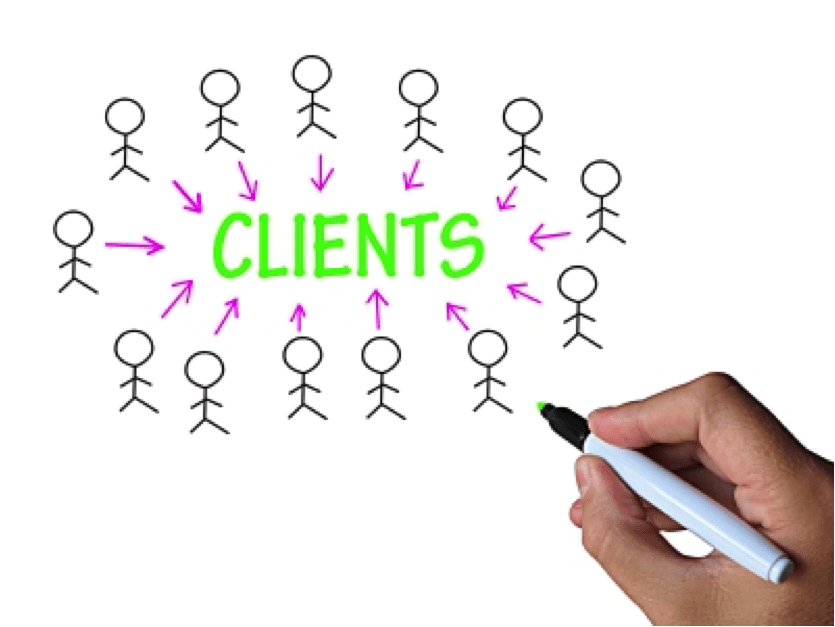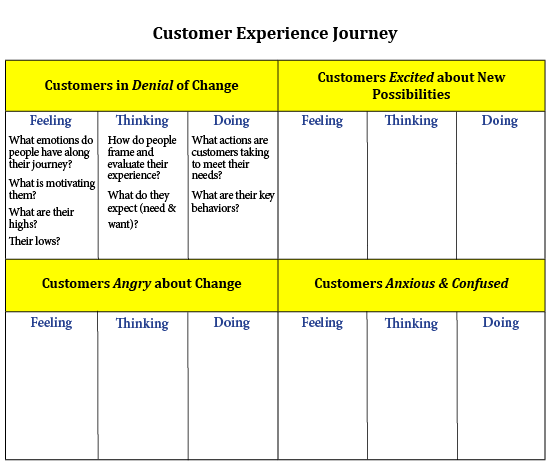Customers [and employees] expect exceptional
experiences and have plenty of other choices
should you not rise to the occasion. Lior Arussy
As we are learning in our workplaces, the Millennials (Generation Y) are not good at following orders because they want to know “why.” They seek to understand so they can decide if they agree.
Why would I want to work for your firm?
Why am I being asked to organize my work this way?
Why would I want to purchase this particular product or service?
Why do you want me to read this book? . . . share this content? . . . participate?
Traditionally, command and control organizations sought compliance not understanding and agreement. However, the internet savvy Generation Why employees and consumers want to understand the purpose or impact of what they are doing and purchasing as well as the logic behind the request.
Creating a customer-centred focus in your organization allows your employees to easily see why they are doing what they are doing, which ultimately is to create an exceptional experience for your customers. At the very least, understanding your customers’ experiences will identify what actions in your organization are not exceptional and need to be altered or ended.
To illustrate my point, let me use a very recent customer experience of my own—checking-in for a flight from Indianapolis to Minneapolis. I preface my customer experience journey with the following knowledge. Every airline has different check-in policies and procedures. This lack of standardization in the industry leaves customers not knowing what to expect, which increases levels of frustration and stress. Subsequently, regardless of the airline, starting expectations of customers with regard to their journey have already lowered from exceptional to ordinary.
I began my ordinary, not exceptional, journey with my Delta carrier not emailing my flight itinerary the previous evening. Not so bad, but I did notice its absence at the Delta check-in kiosk where, without my flight number, I had to swipe my passport to print a boarding pass and baggage tags. Still not so bad, until the kiosks could not read my passport—I tried 5 different kiosks to no avail. Now, I am starting to feel bad. My frustration worsens when I look around for a human helper, and there isn’t one. Sadly, I am forced to join the now long line of passengers sharing the same distress. Fifteen minutes later, I finally receive my needed boarding pass and luggage tag, but my customer experience journey isn’t over yet.
Without telling me, the Delta counter agent gave me a “pre-checked boarding pass,” which entitles the bearer to enter a special line at security where you are not subject to the usual mayhem. That’s right; no taking off coats, boots, belts, jewelry; no removing computers, cell phones, e-readers from your carry on; no showing sealed plastic bags of contained liquids. Because I did not have this prior knowledge, I stood for 10 minutes in the high security line until a roaming Delta agent asked if I had a pre-checked pass. Upon discovering this, I followed the agent to a special line and was whisked through to my gate in seconds. Rather than awed by this immediate service, I was stunned and befuddled. Unfortunately, what might have counter-balanced the previous service fiascos did not. Instead, I wondered why flyers are made to endure such crazy-making security measures when this time I was able to easily sail through. Of course, the nightmare we call air travel had only begun and I wasn’t even on the plane yet, which has its own set of woeful experiences—shrinking aisles, seats, leg room, toilets, bag stowage, meals, etc.
To my puzzlement and dismay, not one Delta employee asked me about my customer experience. Frankly, in over 30 years of relatively frequent flying, no airline carrier has ever asked me about my customer experience. As those who fly have come to realize, airports are among the most stressful workplace environments for customers as well as employees. I think it is fair to say that there is only room for improvement. Given this fairly universal scenario, those airline carriers that make an effort to know what their customers are feeling, thinking and doing, could eradicate a great deal of frustration and anger and build customer loyalty. Business is about relationships, which further translates to business improvement is about improving those relationships.
Consider your own customers’ journey with regard to your product or service offerings. If, much like the airline industry, your customers are typically anxious and confused or even angry, wouldn’t you like to know exactly what is causing those negative feelings? Wouldn’t you like to know what your customers’ feel, think and do as a result of their experiences with your people, products and/or services?
In last week’s blog, I asked you to create customer profiles based on how your customers’ relate to our rapidly changing world. Your customers may fall into all four of the categories—denying change; excited about change; angry about change; anxious and confused about change. These four categories (see table below) can help you sort through the different needs and expectations that show up.
Courtesy of Carolyn Ordowich
As a next step in getting to know your customers, pose the following questions to a sample of them —
- What emotions arise for you along the various steps of your purchasing journey with us?
- What motivates you to purchase this product/service?
- What were the highs you experienced as a result of your customer journey with us?
- What were the lows?
- How would you assess your overall customer experience with our people, service and product?
- What expectations do you have as a customer?
- What do you need to experience?
- What do you want to experience?
- What are you willing to do in order to have your customer expectations fulfilled?
- If we fall short of your expectations, what actions do you take to meet your needs?
In a perfect world, an analysis of customer experience would begin from the outside in. However, if access to your customers is not immediately available, you can do the same exercise with your employees. A staff team enacts the role of a customer and experiences your people, service and products throughout the entire customer journey. Each team member documents their personal story mapping all the steps they took so as to capture individual nuances. Once the team has assessed the data and drawn out key themes, have them consider what organizational transformation is required—change of behaviour (single-loop), change of beliefs (double-loop) and/or change of organizational identity (triple-loop). Answering the following questions will help the team close its own learning
loop —
- What did we learn?
- So what does our learning imply?
- What action should we take?
- How are we different?
Mapping your customers’ and/or your employees’ experiences with regard to their interactions with your people, products and services cuts across departmental silos and fiefdoms. It moves organizations from navel gazing or resting on their laurels to exceptional service.
For more on organizational transformation, click here.






